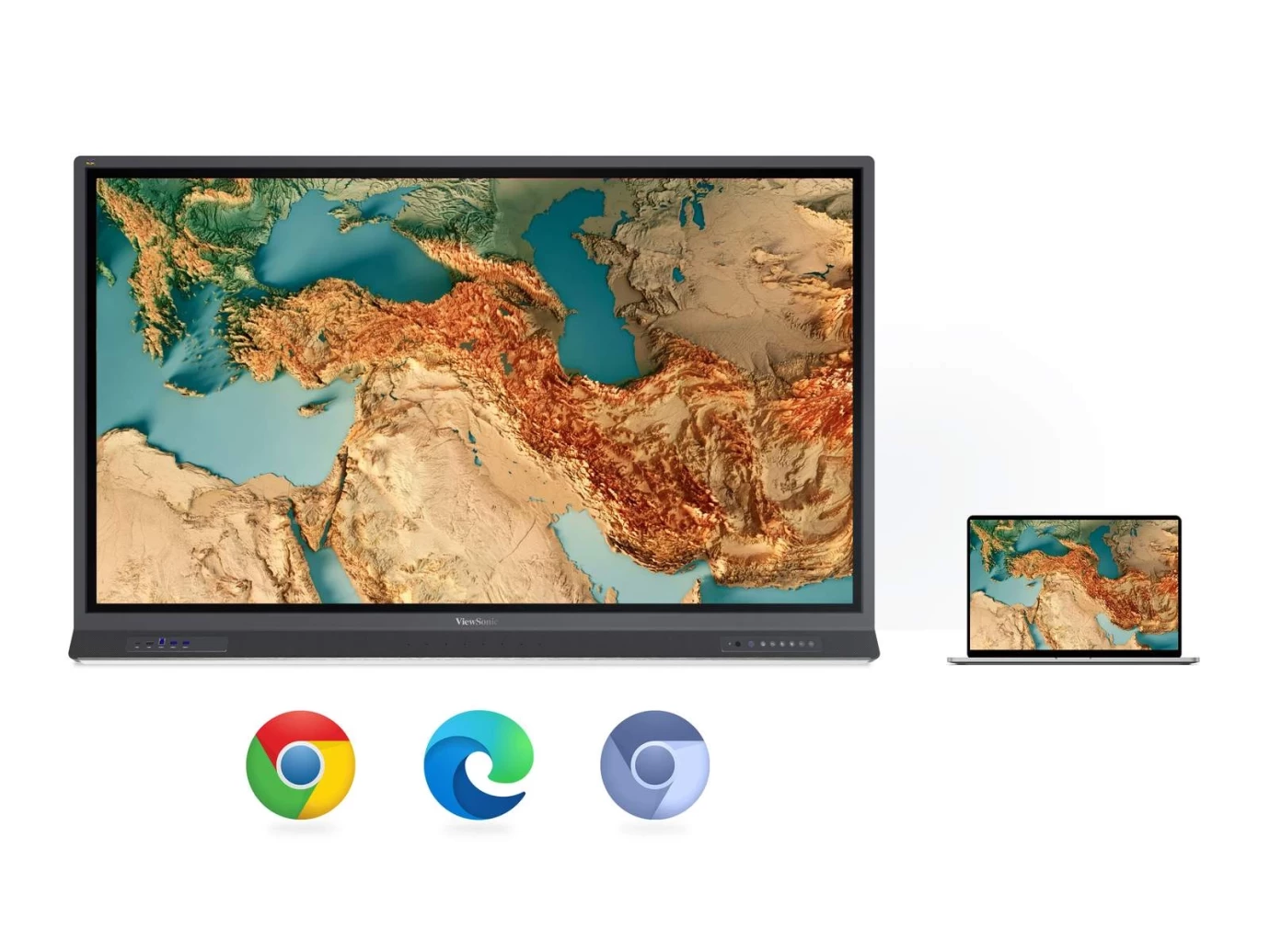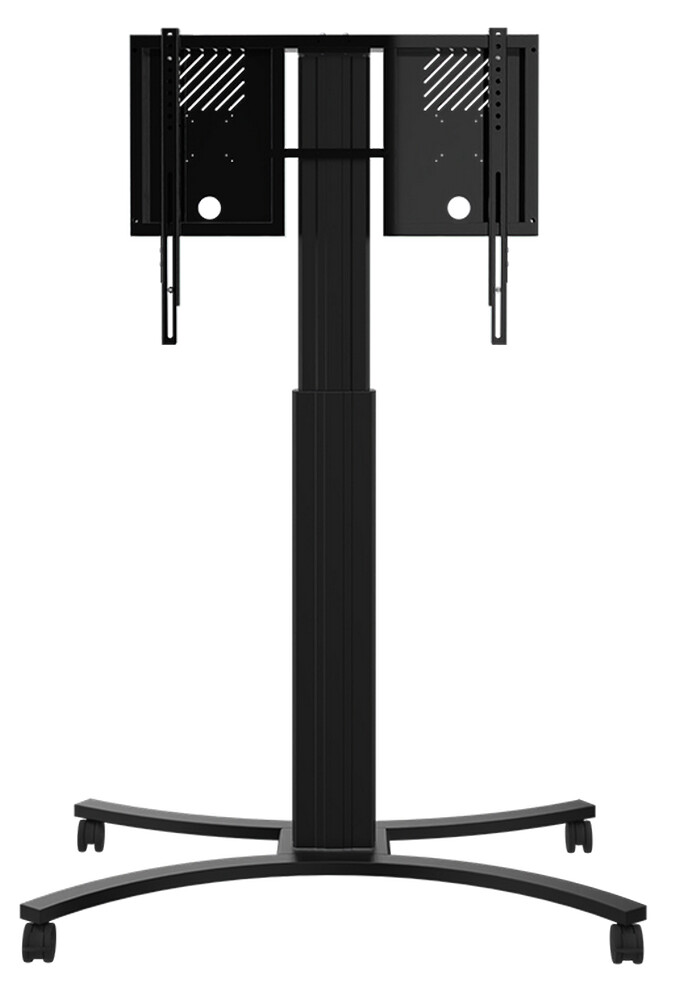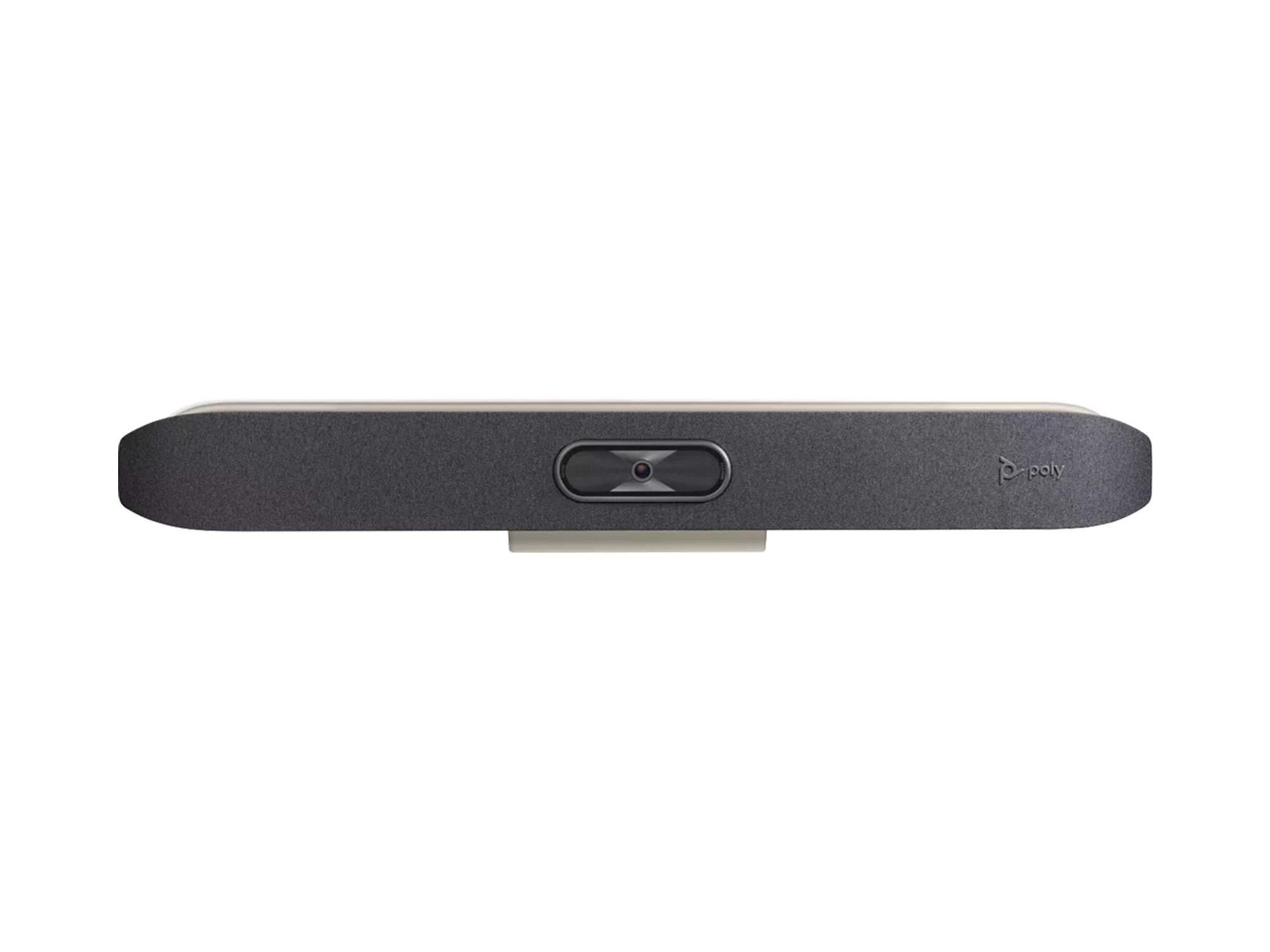



























£3,098.28*
Prices incl. VAT.
3-7 working days Only 4 available. Ready to ship immediately. Delivery Time 3-7 working days
Shipping from £45.99 Product number: 1000019019
- Resolution 3840 x 2160 4K UHD
- Max. Brightness 450 cd/m²
- Panel type IPS
- Contrast Ratio 1,200 :1
A G
G Energy efficiency class



visunext Services
Frequently purchased together
Product information
The ViewBoard® 52 Series is a 4K Ultra HD interactive whiteboard equipped with user-centred design features and best-in-class collaboration tools to make today's classroom easy. With a single-cable solution for instant, hassle-free connectivity and a unique angled design for easy access to quick keys and I/O ports, teachers can effortlessly connect and control devices to ensure uninterrupted, fluid lessons.
Dual pen capability, 33-point touch, Ultra Fine Touch and Palm Awareness technology ensure a naturally smooth writing experience and endless opportunities to collaborate with students. This is supported by two 15W front-firing speakers and a 15W subwoofer for enhanced student engagement. Another industry-first feature of the display is that teachers delivering distance or hybrid learning from their personal device can easily access the 8-microphone array and any connected visualiser to select the most appropriate camera and microphone source. Complete with a browser-based remote management system, the ViewBoard 52 Series provides a market-leading interactive whiteboard solution for teachers, students and IT managers.
Experience the following highlights:
Dual pen capability, 33-point touch, Ultra Fine Touch and Palm Awareness technology ensure a naturally smooth writing experience and endless opportunities to collaborate with students. This is supported by two 15W front-firing speakers and a 15W subwoofer for enhanced student engagement. Another industry-first feature of the display is that teachers delivering distance or hybrid learning from their personal device can easily access the 8-microphone array and any connected visualiser to select the most appropriate camera and microphone source. Complete with a browser-based remote management system, the ViewBoard 52 Series provides a market-leading interactive whiteboard solution for teachers, students and IT managers.
Experience the following highlights:
- USB-C for plug-and-play connectivity via a single cable
- Angled design with easily accessible shortcut keys for optimal usability
- Dual-pen, 33-point touch with natural writing feel
- High-quality audio and eye-care technology
- Centralised remote management system via myViewBoard Manager
Instant connection via USB-C
A one-cable solution for data, video and power that requires no preparation or technical expertise. Teachers can simply plug-and-play to instantly use presentations, whiteboarding and collaborative features with the familiar software of their own device.

Wireless connection via vCastSender
No cable required. ViewSonic's vCastSender application allows teachers to connect wirelessly via a one-time password for wireless teaching with full functionality of the display's presentation and collaboration tools.

Easy casting via myViewBoard Display
myViewBoard Display is ideal for quick presentations and guest users. With myViewBoard Display, users can cast directly to the ViewBoard 52 via their Internet browser for instant screen mirroring without the need for a cable or download.

Industry-first user-focused design
The unique angular design places the control buttons and I/O ports clearly in view, providing teachers with easier access than competing products and allowing them to seamlessly and creatively incorporate the display into the classroom without interrupting the flow of instruction.

Quick keys for easy access
Designed for simplified control, the easily accessible quick keys allow teachers to instantly disable the touch function when not in use and freeze the screen for independent use of their personal device during presentations.

First-class collaboration tools
The 4K Ultra HD display is equipped with Ultra Fine Touch and Palm Awareness technology to provide a completely natural writing experience with dual-pen and 33-point touch capability to support student collaboration in the classroom or online.

Industry-leading sound in the classroom
The ViewBoard 52 Series is designed to fill the classroom with powerful, engaging sound. It features 2x15W speakers and a 15W subwoofer embedded in the front-facing soundbar to amplify the impact of music and video in the classroom to increase engagement.
Advanced eye-care technology
With True Flicker-Free technology, a blue light filter and anti-glare coating all built right into the display hardware, the ViewBoard 52 Series provides an optimal viewing experience that is both easy on the eyes and energy efficient.
Remote Management System
The browser-based myViewBoard Manager application allows IT managers and verified admin users to update, schedule, transfer and manage multiple displays simultaneously from any location via a secure, easy-to-use remote management system.
Device independent and software compatible
The ViewBoard 52 Series is designed to work with the software you know. It works with Android 9.0 and is compatible with Windows, Mac, Chrome and Linux with full touch input functionality for all connected devices.
Enterprise-grade security
The integrated AWS-based myViewBoard ™ whiteboarding software provides comprehensive and trusted data protection through cloud-based security and encryption to ensure the safety and security of private files and information.
Technical data
| Name | ViewSonic IFP8652-1B 86" Touch display - 8GB Ram |
|---|---|
| Article number | 1000019019 |
| GTIN/EAN | 0766907009774 |
| Manufacturer SKU | IFP8652-1B |
| EPREL ID | 983031 |
| Model name | IFP8652-1B |
| Brand | ViewSonic |
| Product Type | Touch display |
| Product Series | ViewSonic IFP52 Series |
| Technology | LED |
| Panel type | IPS |
| backlight | Direct-LED |
| Resolution | 3840 x 2160 4K UHD |
| Diagonal | 86" |
| Aspect Ratio | 16:9 |
| Viewing angle - Horizontal | 178° |
| Viewing angle - Vertical | 178° |
| Contrast Ratio | 1,200 :1 |
| Max. Brightness | 450 cd/m² |
| run-time | 16/7 |
| Response time | 8ms |
| Refresh Rate | 60Hz |
| Support - VESA | 600 x 400 |
| Frame width | 23 mm |
| Operating system | Android |
| RAM | 8 GB |
| Inputs | 1x 3,5mm Jack , 1x Displayport , 1x Ethernet , 1x RS232 , 1x USB-C , 1x VGA , 2x USB-B , 3x HDMI , 5x USB-A |
| Outputs | 1x 3,5mm Jack , 1x HDMI |
| Power per channel | 15 W |
| Features | Touch screen |
| Product width | 196.64 cm |
| Product height | 120.44 cm |
| Product depth | 11.84 cm |
| Weight | 71 kg |
| Colour | Black |
| EEK Spectrum | A to G |
| Energy efficency class | G |
| Delivery contents | 2x Pen , HDMI Cable , Power cable , Quick user guide , Remote control , USB-C Cable , USB cable , screws |
| Condition | New |
| Warranty | 24 Month |
| Warranty type | Bringin service Service and support information |
Downloads
Product safety
| Person responsible for the EU |
|---|
| ViewSonic Technology GmbH |
| Fürst-Leopold-Platz 1 |
| 46284 Dorsten |
| Germany |
| sales-uk@viewsonic.com |





















